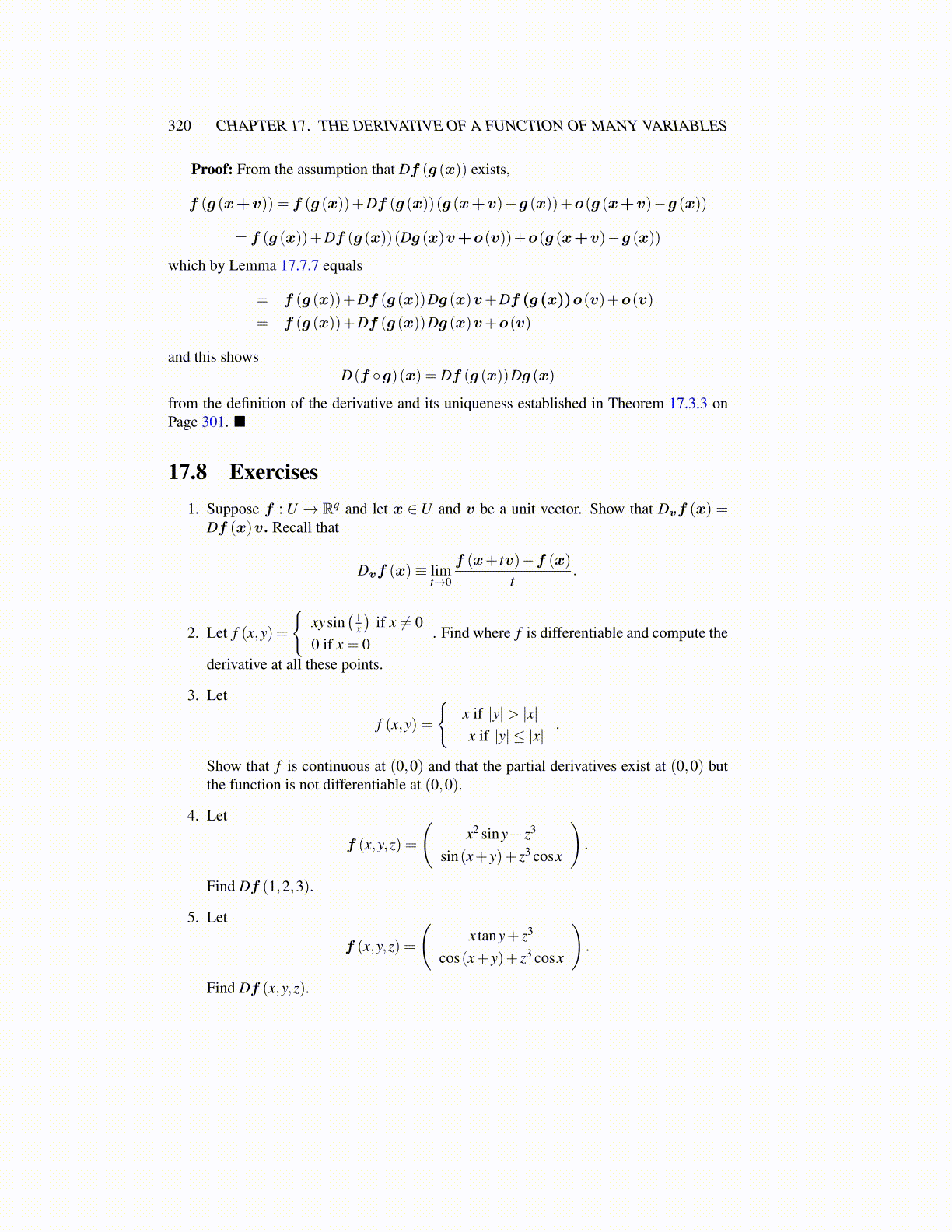
320 CHAPTER 17. THE DERIVATIVE OF A FUNCTION OF MANY VARIABLES
Proof: From the assumption that Df (g (x)) exists,
f (g (x+v)) = f (g (x))+Df (g (x))(g (x+v)−g (x))+o(g (x+v)−g (x))
= f (g (x))+Df (g (x))(Dg (x)v+o(v))+o(g (x+v)−g (x))
which by Lemma 17.7.7 equals
= f (g (x))+Df (g (x))Dg (x)v+Df (g (x))o(v)+o(v)
= f (g (x))+Df (g (x))Dg (x)v+o(v)
and this showsD(f ◦g)(x) = Df (g (x))Dg (x)
from the definition of the derivative and its uniqueness established in Theorem 17.3.3 onPage 301. ■
17.8 Exercises1. Suppose f : U → Rq and let x ∈U and v be a unit vector. Show that Dvf (x) =
Df (x)v. Recall that
Dvf (x)≡ limt→0
f (x+ tv)−f (x)
t.
2. Let f (x,y) =
{xysin
( 1x
)if x ̸= 0
0 if x = 0. Find where f is differentiable and compute the
derivative at all these points.
3. Let
f (x,y) =
{x if |y|> |x|−x if |y| ≤ |x|
.
Show that f is continuous at (0,0) and that the partial derivatives exist at (0,0) butthe function is not differentiable at (0,0).
4. Let
f (x,y,z) =
(x2 siny+ z3
sin(x+ y)+ z3 cosx
).
Find Df (1,2,3).
5. Let
f (x,y,z) =
(x tany+ z3
cos(x+ y)+ z3 cosx
).
Find Df (x,y,z).